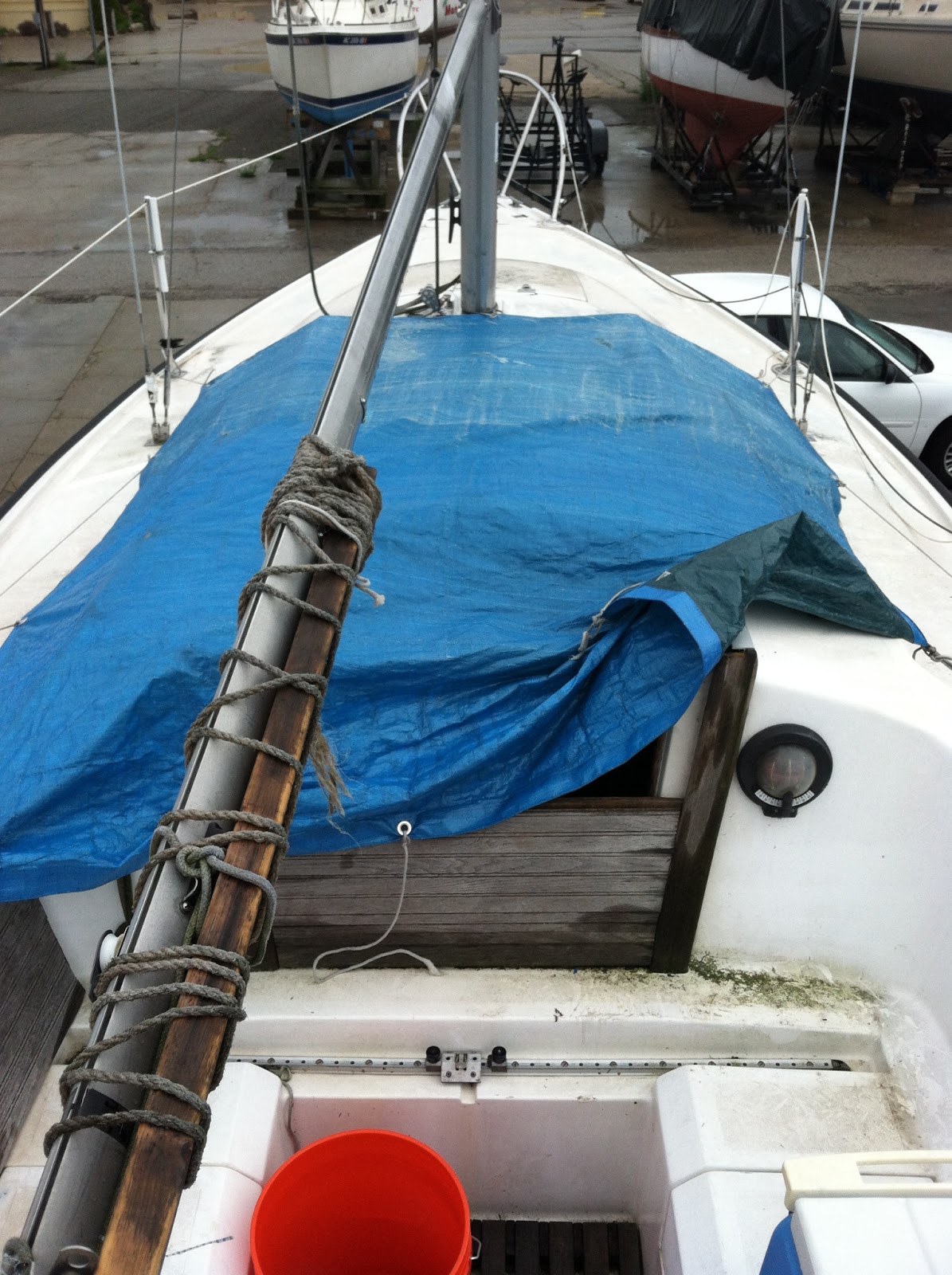 My budget didn't allow for solid teak or even Starboard for replacements of these old boards. These both would have been great options. I wouldn't have worried about my project breaking down as much with solid teak and the Starboard is virtually maintenance free. So, what other options are available for the cost-conscious?
My budget didn't allow for solid teak or even Starboard for replacements of these old boards. These both would have been great options. I wouldn't have worried about my project breaking down as much with solid teak and the Starboard is virtually maintenance free. So, what other options are available for the cost-conscious?I have seen many hatches that were fabricated out of plexiglass and plywood. The plexiglass, especially in the smoked finish, is a great choice. It is maintenance free, cheap, and relatively easy to work into the desired shape. Unfortunately, this is your most used (read abused) piece of hardware on a sailboat. The plexiglass is prone to scratches and chipping. Additionally it will become checkered in the sun and bow after a couple of years of use. The plywood is another often used option. Easily available and workable with a great price. If fabricated appropriately with the right amount of waterproofing this is a viable option. The maintenance is significant though. Any finish you will put on this wood does not stand up to the sun and water exposure for long. If you go with this option, remember that you can epoxy it for a more durable finish. I was fed up with delaminated wood though, so this option wasn't very attractive for me.
A solution presented itself to me as I was milling around a major home improvement retailer, as I am prone to do. I came across a PVC product used for trim in houses. I did some quick math and realized that one board would work for my hatch using three fitted boards. I include the picture of the price tag for reference only, I am not condoning this product.
 I brought the PVC board to my workshop where I routed down the face side on one long edge of the board and the back side on the other edge. You can use any size rabbeting bit that you have to make what will become a lap joint between the hatch boards. You just want to make sure that the depth of route that you cut is half the thickness of the board you are using. The size of the rabbet will be the overlap on the boards providing a "water-tight" seal between your hatch boards.
I brought the PVC board to my workshop where I routed down the face side on one long edge of the board and the back side on the other edge. You can use any size rabbeting bit that you have to make what will become a lap joint between the hatch boards. You just want to make sure that the depth of route that you cut is half the thickness of the board you are using. The size of the rabbet will be the overlap on the boards providing a "water-tight" seal between your hatch boards.With the backside rabbet at the bottom it allowed a better fit on my slanted sill of my companionway. I then used the old hatch boards to measure out the angle to cut so that it fits in the slots of the companionway brightwork. In retrospect, I should have measured this with a tape measure. I am not satisfied with the finished fit and would have been happier if I measured at the bottom and then the vertical height of the board and used those measurements to cut the angles.
These PVC boards are very workable. They cut very easy with a circular saw or table saw. The top of my companionway is curved. I went below and put all the boards in place. I then drew a pencil line on the inside edge of the hatch sliding top to get the proper curve so the board matches the slide closely. I measured 1/2 inch from that line for my final cutting line. A little sanding of that curved edge and I was done. No other finishing required.
Here are a couple of thoughts I had about this project. I am slightly morally opposed to using this PVC product. I don't like all the garbage toxins used in manufacturing of this product and their effect on our ecosystem. I also have no idea how this is going to hold up. These boards work great on a house for many years but will they hold up to frequent use? When they are on the house, there is no moving or banging of these boards. PVC tends to get brittle and oxidized in the sun. How long will these boards last me with environmental exposure? I will let you know more about my experience with this product as it unfolds. I hope that this gives you another option for replacing your companionway hatches that apparently are just doomed for untimely demise.






